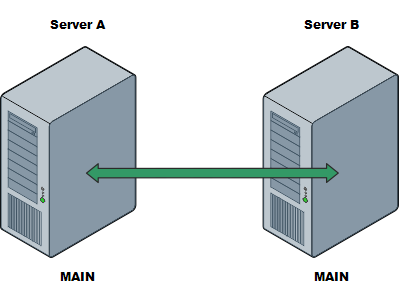This example describes the sequence of events that would occur when a Main server and a Standby server in a Hot-Standby Pair architecture both become isolated (see Define what Action Should be Taken when a Server Becomes Isolated). In this case, the network connection has been lost and ICMP polls have failed.
The network consists of a Hot-Standby Pair. Server A is the Main server and Server B is a Standby server.

The settings for both servers are as follows:

The sequence of events is as follows:
- The network connection is lost. Server A and Server B are both isolated. Server A remains the Main server and Server B also becomes a Main Server so that it can function independently.
- The network connection is restored. There are now two Main servers.

- Both servers lose arbitration. The default arbitration mechanism determines which server will now be the Main server and which will be the Standby server (see Define the Server’s Arbitration Priority). In this particular case, if arbitration favors Server A, it would remain as the Main server and Server B would become the Standby server.

Further Information